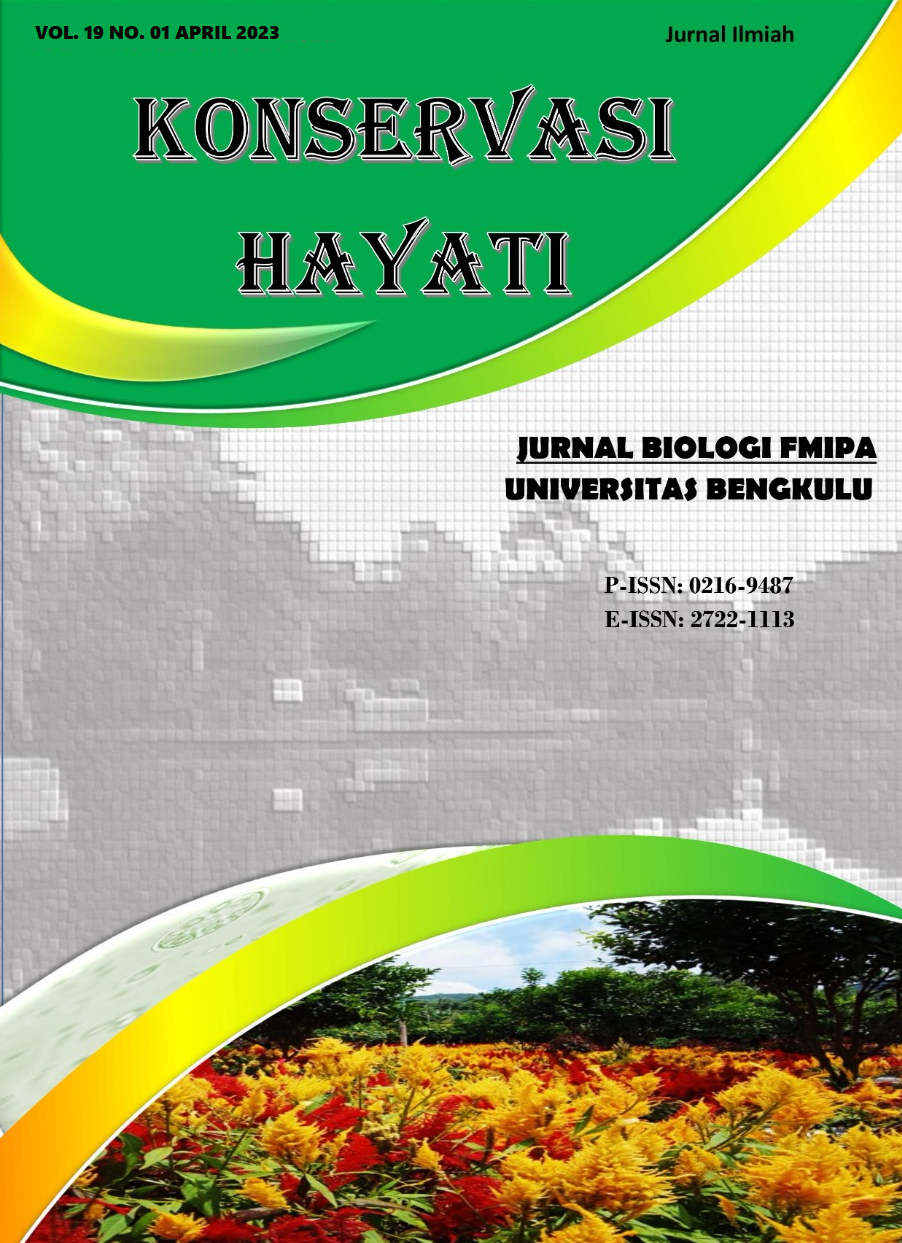Main Article Content
Abstract
Cashew fruit is a plant that is widely grown in eastern Indonesia, such as in NTB, Bali, NTT, South Sulawesi, and Southeast Sulawesi. The study aimed to identify the endophytic fungi found in cashew trees. The method used in this research was taking samples, namely the roots, root bark, stems, bark and leaves of the cashew plant then making instant PDA media mixed with distilled water and antibiotics with direct planting techniques on PDA in Petri dishes. Furthermore, the purification of endophytic fungi was carried out followed by macroscopic and microscopic observations by observing the types of spores, spore forms, and hyphae. The results of macroscopic and microscopic observations on samples of isolates coded KB.AO1 and D.AO1 were identified as belonging to the genus Fusarium, isolates coded KB.AO2 belonged to the genus Trichoderma, isolates coded A.AO1 belonged to the genus Colletotrichum, and isolate A.AO2 belonged to the genus Acremonium, isolate KB.AO1 belongs to the genus Cladosporium, code KB.AO2 belongs to Aspergillus, isolate code BAO1 belongs to Pythium, isolate code BAO2 belongs to Mucor, and isolate code DAO2 belongs to Nigrospora.
Article Details
Copyright (c) 2023 Ummi Hiras Habisukan, Aisyah Musyalina, Rian Oktiansyah, Pandu Jati Laksono

This work is licensed under a Creative Commons Attribution-ShareAlike 4.0 International License.
Authors who publish in this journal agree with the following terms:
- Authors retain copyright and grant the journal right of first publication with the work simultaneously licensed under a Creative Commons Attribution-ShareAlike 4.0 International License that allows others to share the work with an acknowledgement of the work's authorship and initial publication in this journal.
- Authors are able to enter into separate, additional contractual arrangements for the non-exclusive distribution of the journal's published version of the work (e.g., post it to an institutional repository or publish it in a book), with an acknowledgement of its initial publication in this journal.
- Authors are permitted and encouraged to post their work online (e.g., in institutional repositories or on their website) prior to and during the submission process, as it can lead to productive exchanges, as well as earlier and greater citation of published work (See The Effect of Open Access).
- This work is licensed under a Creative Commons Attribution-ShareAlike 4.0 International License.
